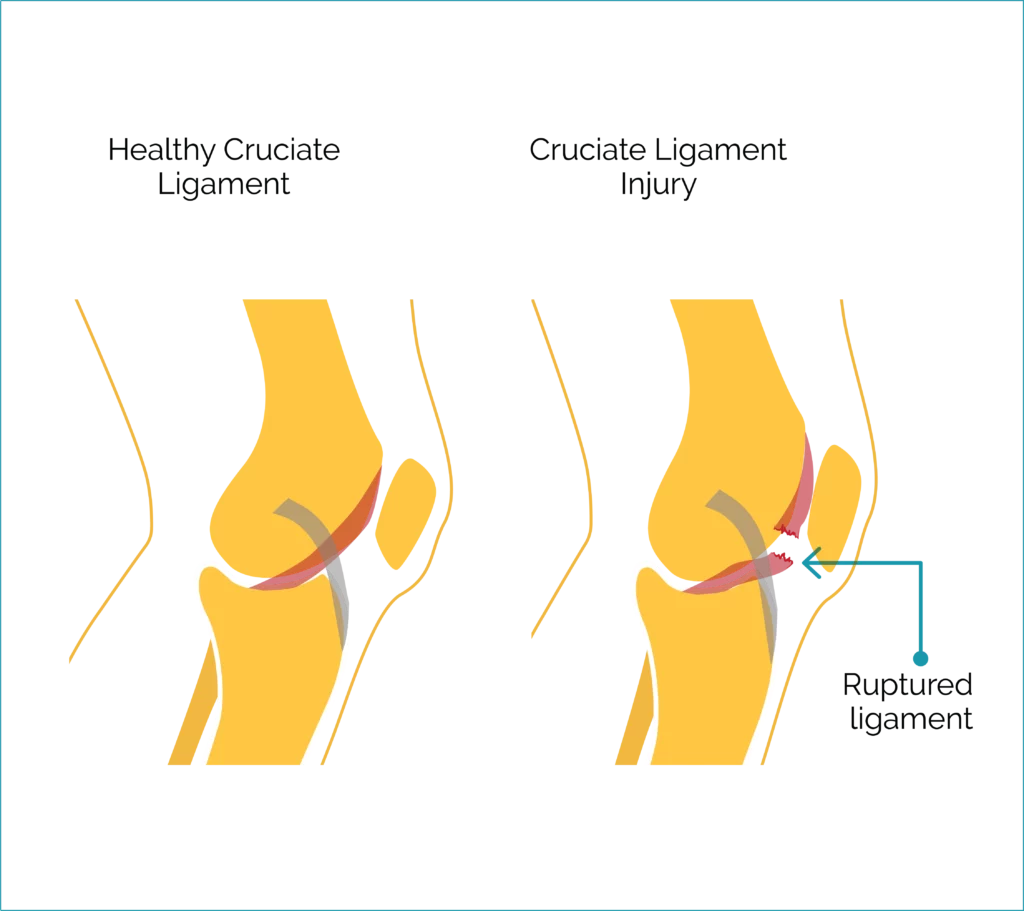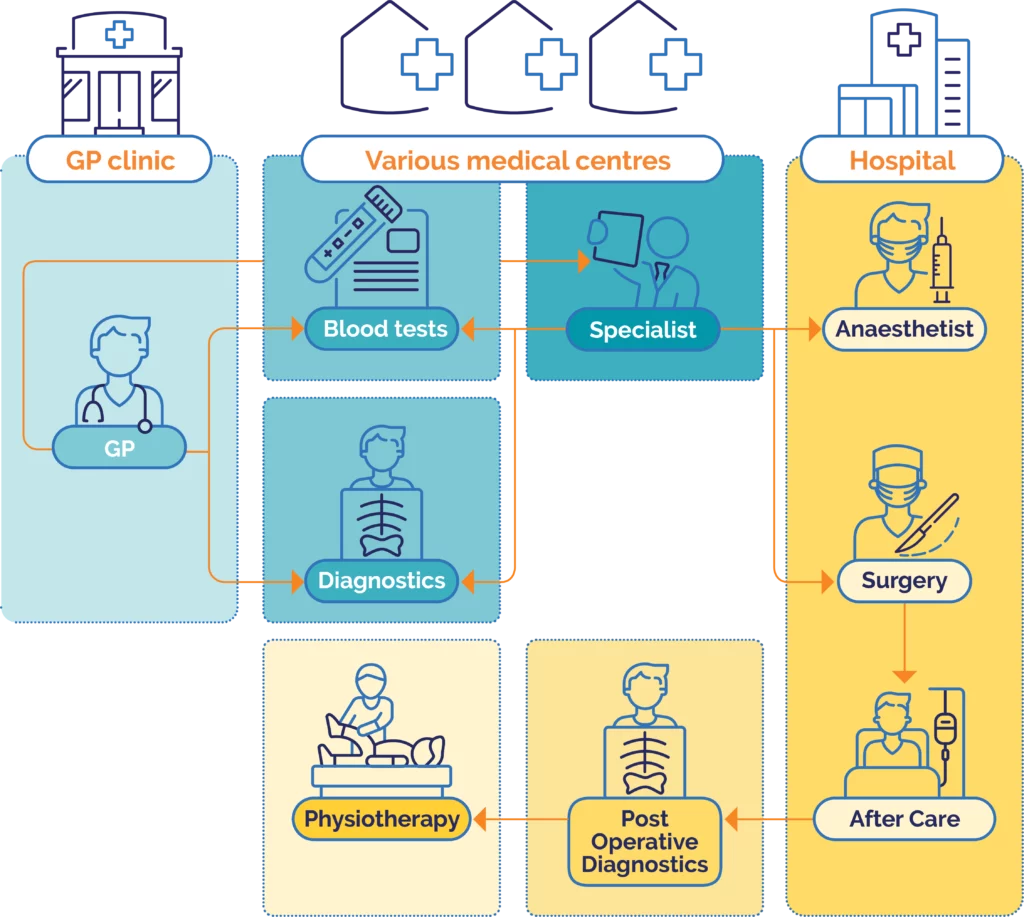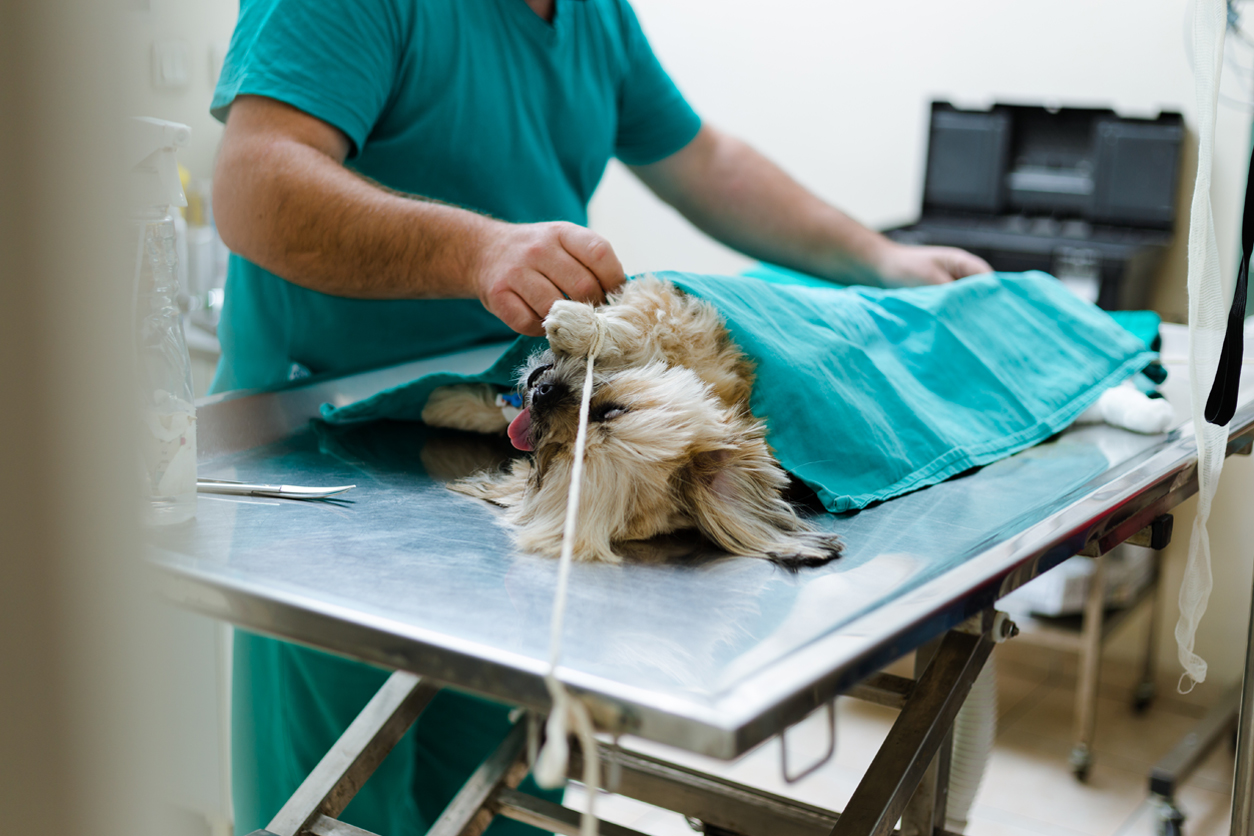In last years’ Pet Health Monitor, we looked at a summary of specialist fees only, in this article, we have taken a deep dive into both the surgery and the hospital fees.
Hip replacement
In both humans and animals, hip replacement addresses hip joint-related issues, in particular arthritis and hip dysplasia.
In humans this procedure is common, whereas in dogs, it is typically reserved for larger dogs with severe hip dysplasia. The surgery involves removing the damaged or diseased hip joint and replacing it with an artificial joint, to improve mobility and alleviate pain1.

Surgery and recovery
The treatments for hip replacement in humans and animals are similar in both species.
Through an incision over the hip, the surgeon takes out the worn-out part of the thigh bone and puts in a metal stem (inside the bone). On top of the stem, they attach a new ball, made of metal or ceramic, to replace the damaged part.
The worn hip socket cartilage is replaced with a metal socket, fixed by screws or cement2.

Postoperative recovery involves controlled rehabilitation, pain management, and activity restrictions, but differences occur in weightbearing progression. Canine patients are immediately full weight bearing while human patients have a more gradual approach in reaching full mobility. Active canine patients present opportunities for complications that may be less likely to arise in human patients.
Procedure similarities and differences
| Similarities | Differences |
|---|---|
|
|
Hip replacement surgery costs
| Human | Pet |
|---|---|
| Human hip replacement surgery for a single hip costs $25,000^ on average, including hospital fees (~$5,000 for specialist fees and ~$20,000 hospital fees), but many people would not have to pay this as an out-of-pocket expense due to Medicare and health insurance which may cover most of the costs for eligible Australians. ^Medical Costs Finder | Australian Government Department of Health | Veterinary costs for hip replacement surgery has an average cost of $12,300* per hip (which typically breaks down to approx. $5,000 – $6,000* for the surgical procedure, with the remainder for related veterinary expenses). However, it could be as much as $25,000*. This cost also includes aftercare for your pet at the veterinary hospital. With no Medicare for pets, this is an out-of-pocket expense for pet parents without pet insurance. *Based on PetSure claims data, 2023 calendar year |
Cruciate ligament surgery
Both humans and dogs can experience cruciate ligament injuries due to trauma, wear and tear, or genetic predisposition. The primary goal of cruciate ligament surgery in both species is to restore stability to the knee joint, alleviate pain and improve overall joint function.
Cruciate ligament surgery is also known as ACL (Anterior Cruciate Ligament) surgery in humans and CCL (Cranial Cruciate Ligament) surgery in pets.

Surgery and recovery
There are a variety of different procedures to repair an ACL. The procedure addresses ligament disease in the knee joint. While humans and animals share the need for this procedure due to ligament tears or ruptures, there are distinct differences between humans and pets’ anatomy and function which requires different surgical procedures.
Humans
A commonly used method involves using arthroscopy, a surgical procedure where doctors use a tiny camera through keyhole surgery to look inside a joint. They remove the damage to the ligament and replace it with a tendon from another part of the patient’s body (a graft).
This is not used in veterinary cruciate ligament repairs due to the major mechanical differences that exist between pets and humans that make graft-based techniques less reliable3.
Pets
In animal knee surgery, arthroscopy can be used to remove damaged ligament and cartilage. However, the most common types of knee ligament surgery are: TPLO (Tibial Plateau Leveling Osteotomy) and Lateral Suture.
TPLO involves cutting and rearranging the shin bone to stabilise the knee, helping most dogs walk normally in about a week, but full recovery takes 4 to 6 months.
Lateral Suture, often used for smaller dogs, involves removing damaged ligaments and using a strong thread to stabilise the knee. Dogs recover faster, usually within 2 months, and the thread eventually breaks, but by then the dog’s own tissue has healed and taken over.
The choice between these surgeries depends on the dog’s size and specific condition.

Both humans and dogs require postoperative rehabilitation. As with hip replacement, patients require physiotherapy for the best chances of recovery.
Recovery for pets involves restricting the pet’s activity, and rehabilitation may include physiotherapy or hydrotherapy.
Procedure similarities and differences
| Similarities | Differences |
|---|---|
|
|
Cruciate ligament surgery costs
| Human | Pet |
|---|---|
| A knee reconstruction in humans’ costs approximately $9,200^ per knee, (including $3,800^ for surgical costs and $5,400^ in hospital fees). There may be some or limited out of pocket expenses, but rarely would an Australian be required to pay the full amount on their own pocket. They may of course, choose to do so in some cases. ^Medical Costs Finder | Australian Government Department of Health | Cruciate surgery costs for pets (across most procedures) varies depending on the type of surgery, and size of the pet. The average cost of surgery is $3,000- $4,000* for surgical fees and up to $2,000* for veterinary hospitalisation, bringing the average cost to approx. $5,500. However, the claim could be as high as $28,000 depending on the pet’s size and the potential complications. For an uninsured pet parent, they would be out-of-pocket for the full cost. *based on PetSure claims data, 2023 calendar year |
The patient journey
For both humans and pets, the surgical journey typically starts with a visit to the general practitioner, but from there we humans tend to find ourselves making several different stops along the way for diagnosis, treatment planning and treatment. Let’s look into these journeys:
Humans
The general practitioner may request radiographs (or other diagnostic imaging which occurs at an external facility) or refer straight to an orthopaedic specialist. The human patient may need to go to numerous facilities to obtain their diagnosis and treatment including pathology services, diagnostic imaging services (which can involve imaging such as X-rays, CT scans, or MRI).

Pets
Veterinary orthopaedic treatment for animals, usually dogs, often presents a more streamlined process. Many veterinary clinics and hospitals have in-house facilities under the one roof for diagnostic imaging, surgery and post-operative care. This integration of services can lead to a more efficient treatment timeline.
Like human surgical procedures, veterinary orthopaedic specialists play a key role in diagnosing and performing surgeries on animals. The collaboration with veterinary anaesthetists and other specialists ensures the pet’s safety during the procedure. Pets typically undergo the orthopaedic surgery in the specialist veterinary hospital, but in some cases a specialist may visit a general practice and perform surgery there.

Summary
Comparing the treatments of hip replacement and cruciate ligament surgeries in humans and pets, sheds light on the remarkable standards of care in both human and animal medicine. Similarities exist in the procedures, technology and expertise applied, emphasising the shared commitment to ensuring the wellbeing of patients, whether for a human or our furry companions.
However, the process and costs associated with these treatments differ. While humans navigate a complex healthcare system with multiple points of access, resulting in longer diagnostic and treatment timelines, pets typically receive more streamlined care through veterinary general practitioners and specialists.
The costs related to pets and human do vary, but are not as different as some people might think, because the treatment approach is very closely aligned. Medicare and private health insurance can disguise the true costs of human health because we rarely see the full cost deducted from our bank account. In contrast, pet owners are responsible for covering the full cost of their pets’ veterinary expenses, unless they have a health insurer who reimburses the vet directly, such as GapOnly® ready policies.
So, the next time you receive a veterinary bill, consider that the level of pet health treatment veterinary professionals provide is frequently on par with what humans themselves receive.
References
PetSure would like to Acknowledge the assistance of Andrew Cottrill Chief Medical Officer of HCF Health insurance or his assistance in understanding the human health aspects of this article.
- https://orthoinfo.aaos.org/en/treatment/total-hip-replacement
- https://petsure.com.au/knowledge-hub/hip-dysplasia-in-dogs
- https://www.ncbi.nlm.nih.gov/pmc/articles/PMC10336184/
Additional background source documents for research:
https://www.ncbi.nlm.nih.gov/pmc/articles/PMC8714762/
https://www.frontiersin.org/articles/10.3389/fvets.2021.791434/full
https://medicalcostsfinder.health.gov.au/services/H39/ih
https://www9.health.gov.au/mbs/search.cfm?q=hip+replacement&Submit=&sopt=S
https://www.canstar.com.au/health-insurance/hip-replacement-cost/
https://www.aihw.gov.au/reports-data/myhospitals/intersection/access/eswt
https://davidslattery.com/how-much-does-a-hip-replacement-cost-privately
https://coastalorthopaedicsurgery.com.au/how-much-does-a-hip-or-knee-replacement-cost-in-australia/
https://comparehealthinsurance.online/posts/hip-replacement-cost-australia/
https://www.medibank.com.au/health-support/hospital-assist/costs/anterior-cruciate-ligament/
https://www.sciencedirect.com/science/article/pii/S2059775422000840
https://onlinelibrary.wiley.com/doi/full/10.1111/vsu.13755
https://www.nhs.uk/conditions/knee-ligament-surgery/what-happens/
Pet insurance can help by covering a portion of the eligible vet bill if the unexpected happens. Because it is difficult to predict the costs of veterinary care, it can help to have measures in place to help prepare for the unexpected. Check out our partner network and explore our policy tools to find a pet insurance policy.
Not all conditions or items are covered by Pet Insurance. Refer to the applicable Product Disclosure Statement for information about coverage and exclusions.



 Fact checked
Fact checked






